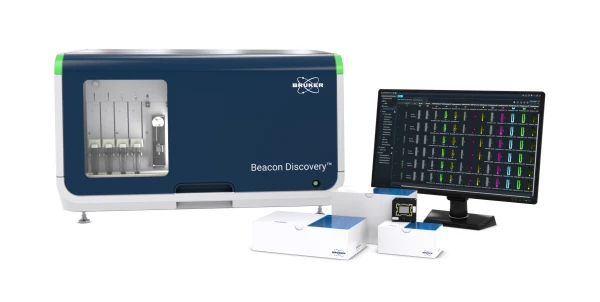New Liquid Handling Technologies and Drivers of Innovation
By Shalaka Samant PhD and Damon Anderson PhD
Lab Automation and Liquid Handling
Automation has greatly enabled modern life science laboratories by addressing critical factors of speed, accuracy, precision, and efficiency. Fast and repeatable liquid handling is often key to successful life science or drug discovery experiments. As such, automated liquid handling instruments that facilitate precise and rapid dispensing of micro-volumes of reagents have proven extremely valuable in the lab. This applies to high-throughput and high-content research processes as well, which are often challenged by large sample sets and the need for rapid and efficient processing.
Performance and Efficiency
Modern liquid handling technologies not only boost lab performance but serve the added benefit of freeing up scientists to focus on value-added activities. These may include experiment design, research optimization, and data analysis – duties that serve a higher purpose, rather than routine, time intensive tasks. By decreasing human intervention through the use of automated liquid handling, the chances of error, variability, and systematic bias are reduced. Furthermore, the requirements for controlling sterility, exposure to light, exposure to hazardous chemicals, and experimental waste reduction, all serve as important driving factors helping the design of liquid handling solutions.
Product Feedback and Innovation
Significant improvements in automated liquid handling technologies have been driven in part by user communication and feedback between instrument manufacturers and laboratory scientists. Companies continually innovate to bring new products in-line with consumer requirements based on the needs and challenges of specific research applications. Important criteria driving continued improvement include considerations of: fluid type, volume range, nature of the liquid being handled, scale of use, accuracy, and rate of dispensing. Other areas of focus include addressing hurdles such as problematic disposable tips, non-independent channel spreading, and restricted platforms.
With these driving factors in mind, here are four important areas of current liquid handling innovation.
Precision Low-Volume Liquid Handling
While performance criteria once focused squarely on speed, capacity, and throughput -- more recent advances in automation, software, and robotics have led to the development of new generation platforms offering exceptional accuracy and precision even when dispensing the smallest volumes.
- Secure sealing and accurate positioning of the tip on the pipetting channel is one of the key features that facilitates this precision dispensing. In fact, new liquid handling technologies are now available to allow precise measurement and dispensing of liquid quantities down to the 10 nanolitre range.
- The latest positive displacement liquid handlers have disposable micropipette tips with their own individual pistons, offering true positive displacement pipetting with minimal risk of clogging, corrosion, or cross-contamination.
- Non-contact liquid handling is another innovative technique by which minimal sample usage is ensured while avoiding cross contamination.
Flexibility
New automated liquid handling systems offer flexibility and adaptability to varying experimental needs, inlcuding unique sample types and microplate formats.
- Multi-drop reagent dispensers, based on peristaltic pump dispensing technology, utilize detachable autoclavable multidrop cassettes for dispensing a wide variety of reagents, diluents, cells, and beads.
- New automated liquid handlers allow scientists to work in 96, 384, 1536 well format within the same protocol, using automatic, exchangeable pipetting tools. Users are able to choose between fixed cannulas or disposable tips or both, according to the cost of the assay and the sample integrity.
Miniaturization
Device miniaturization without compromise of volumetric precision is yet another modern development theme. Given the high cost of many reagents used in today’s life science experimentation, considerable savings can be made by simply using less.
- Proprietary technologies are being developed to dispense droplets up to 1,000 times smaller than those from standard equipment, reducing assay costs as much as six-fold.
- Recently, acoustic liquid handlers with sub-microliter precision have become commercially available and have been used for a large range of applications, including RT-qPCR, mass spectrometry, drug discovery, and compound dosing assays.
Integration
Other advances have come in the form of multipurpose liquid handling automated workstations. These integrated workstations are tools designed to not only pipette and sample liquids but also mix and combine liquid samples automatically.
- The workstations can measure chemicals, add reagents, and even check that liquids are added to bioassays in a uniform fashion.
- Recently introduced platforms act as true pipettors and not merely dispensers, aspirating, dispensing and even mixing.
- Sensor-integrated robotic systems carry optical sensors that check labware, liquid levels, tip count, and tip-type at the start of each cycle. This minimizes the risk of error during the run and reduces the need for constant monitoring by personnel.
- Lab-on-a-chip systems include microfluidic platforms that facilitate the easy combination of a set of fluidic unit operations, giving the user the flexibility to program different liquid handling protocols.
- Digital microfluidics offers an appealing solution for programmable manipulation of nano- to pico-liter droplets on a miniaturized device.
Summary
New liquid handling and pipetting platforms have overcome the early technological hurdles in the field, effectively resolving issues with evaporation control, difficulties of liquids with diverse rheological properties, evaluation and calibration, clogging detection, and air bubbles dissolution.
Technological innovations in the automated liquid handling field are continuing to tackle the latest challenges -- enabling applications in microfluidics, high-resolution analytical separations, multipurpose implementation, and other evolving areas.
A sampling of new liquid handling technologies:
LHS Liquid Handling Station from Brandtech - Routine lab tasks with high speed and precision
Biomek i-Series Automated Liquid Handling Workstations - Multi-functional operations for mid- and high-throughput labs
PE JANUS® G3 Liquid Handling Workstations - Automated sample preparation
SCICLONE G3 Liquid Handling Workstations - Automated high-thoughput plate to plate processing
ZEPHYR G3 Liquid Handling Workstations - Benchtop sized liquid handler
LYNX Liquid Handling Platform from Dynamic Devices - Combined novel microfluidics and traditional capabilties
VERSA Series of Automated Liquid Handling Workstations from Aurora - Flexible design to automate various lab operations
ECHO MS Acoustic Ejection Mass Spectrometry System from SCIEX
Clinical Automation, Sample Prep for NGS, and Sample Prep for MS from Tecan
Acoustic Liquid Handling for High Accuracy and Precision Workflows from Labcyte
Automated Liquid Handling Solutions for a Range of Lab Operations and Scales from Thermo Fisher
View Automated Liquid Handling listings at LabX.com
View Pipette and Pipette Tips listings at LabX.com
View Robotics listings at LabX.com










